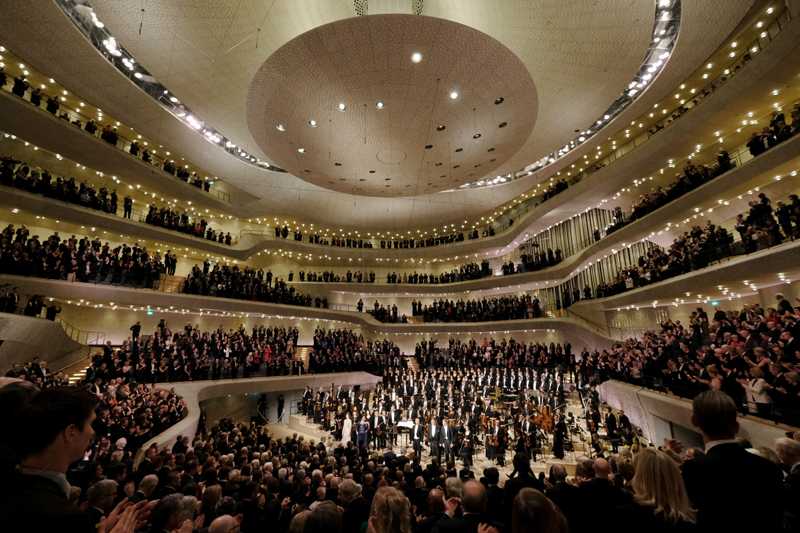MA Lighting for Hamburg’s Elbphilharmonie
- Details

However, the building not only has a striking architecture plus two concert halls (Large and Small Hall) as well as a 244-room hotel and 45 exclusive private apartments under its roof - it is also equipped with professional technology in all areas - including MA Lighting solutions.
Mike Neumann, master of event technology (lighting technology) at the Elbphilharmonie, explains: "The Great Hall with its 2,100 seats and the Small Hall with 550 seats were primarily designed for perfect acoustics. The lighting technology was regarded as rather secondary in the initial planning phases. However, we were able to adapt this considerably, and are now using grandMA2 consoles for both areas at the highest technical levels. This allows us to use network functionalities such as back-up solutions and networked controls to access elements like house lighting, and it also gives us headroom for future requirements.
"All aspects of MA’s reputation, built up over the past decades, spoke in its favour," Neumann continued, "Reliability, ease of use and we are always at the cutting-edge of technology with it. We hardly ever had any problems with our consoles - and that is with around 600 productions a year! If there was ever an issue, we could rely 100 percent on the support of the German distributor Lightpower".
All in all, the system consists of: one grandMA2 light, one grandMA2 light SV (silent version), one MA onPC fader wing, one grandMA2 onPC (19" fileserver) and two MA 4Port Nodes for the Big Hall; one grandMA2 light, one grandMA2 light SV (silent version), one MA onPC fader wing, one grandMA2 onPC (19" Fileserver) and two MA 4Port Nodes in the Small Hall as well as one MA onPC command wing, one MA onPC fader wing and one MA 2Port Node in Kaistudio 1, which is also located in the building.
Matthias Baumgartner, who also works in the technical project management of the Elbphilharmonie, added: "We work with a wide variety of protocols here, including MA-Net2, Art-Net and sACN. An example of how we use the network is that in the Small Hall we control the light from the backstage area via an MA onPC command wing, while the grandMA2 light serves as a back-up. This allows lighting to be adapted directly to the requirements for TV recording or transmission. The LED lighting in the foyer can also be integrated into the lighting ‘mood’ to have an overall concept both inside and outside the halls.”
Neumann concluded: "The Elbphilharmonie is a very complex building. Many of the requirements we have to meet here are unique and posed major challenges during the planning phase. Our aim was to design the lighting in such a way that it could be used as flexibly as possible and at the same time meet the extremely high requirements for low noise levels, fire protection and personal protection.”
The lighting technology department of the Elbphilharmonie includes Mike Neumann and Matthias Baumgartner, plus a team of around 25 people who take care of all the technical requirements for concert operations.
(Jim Evans)
















